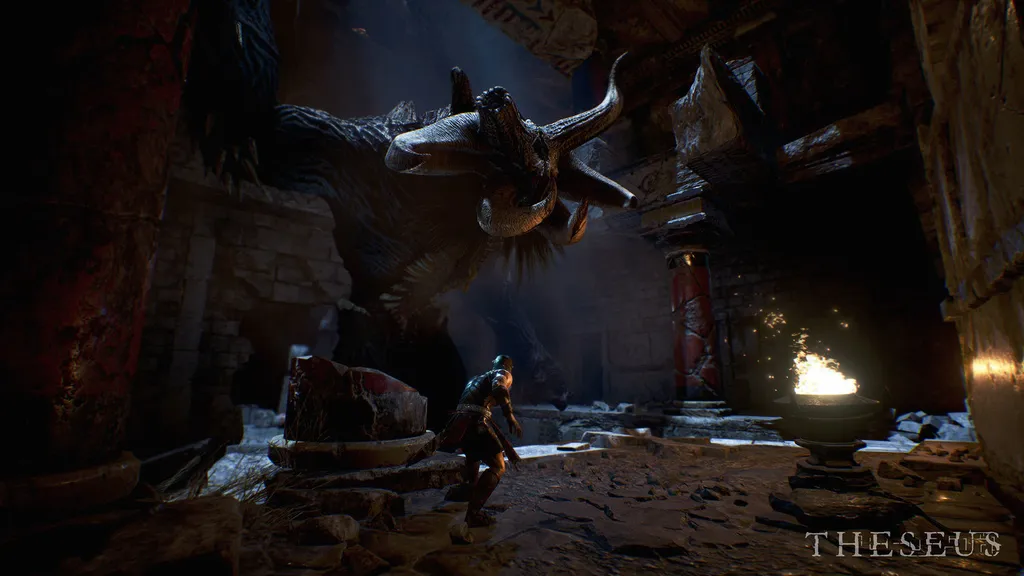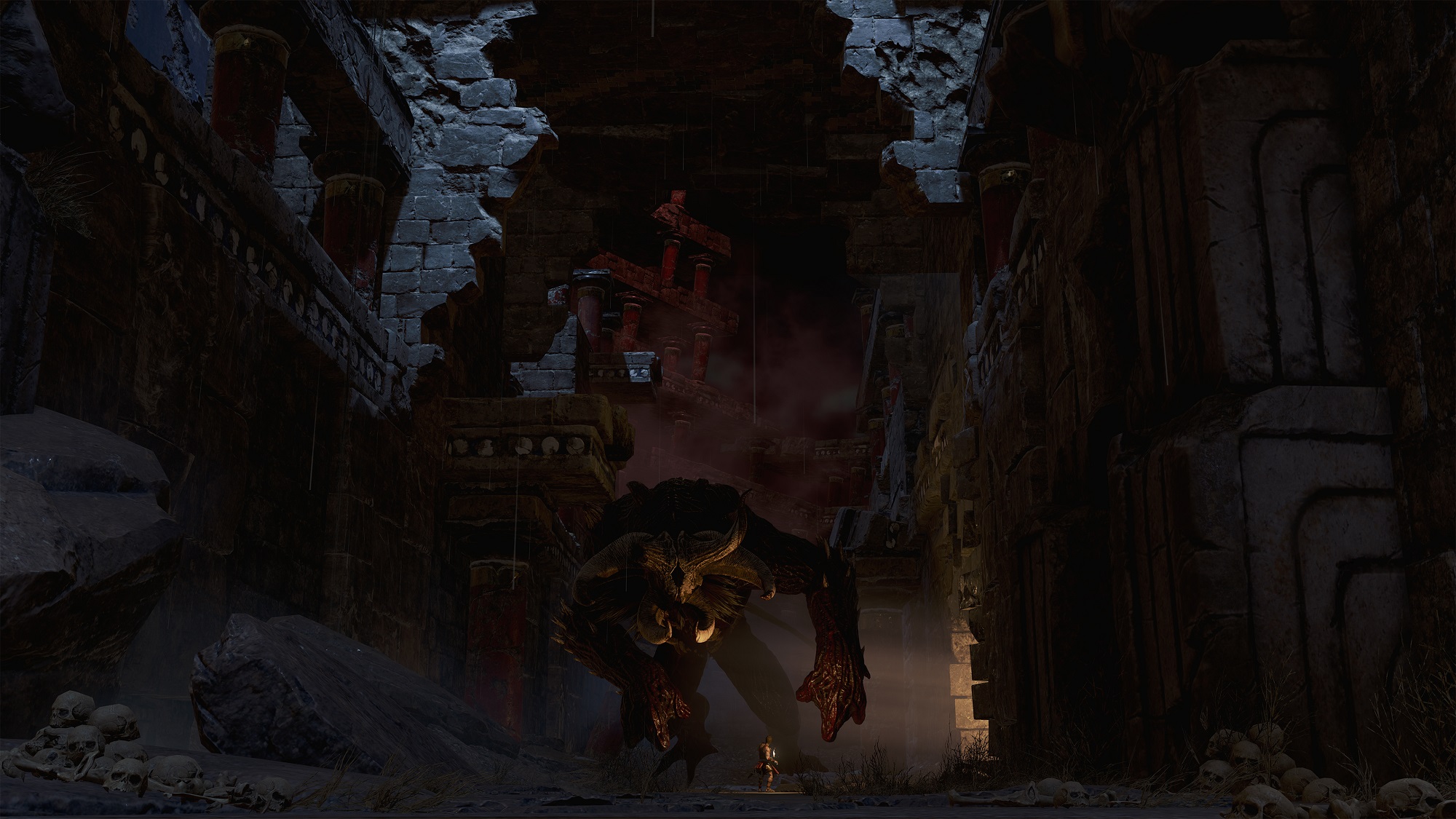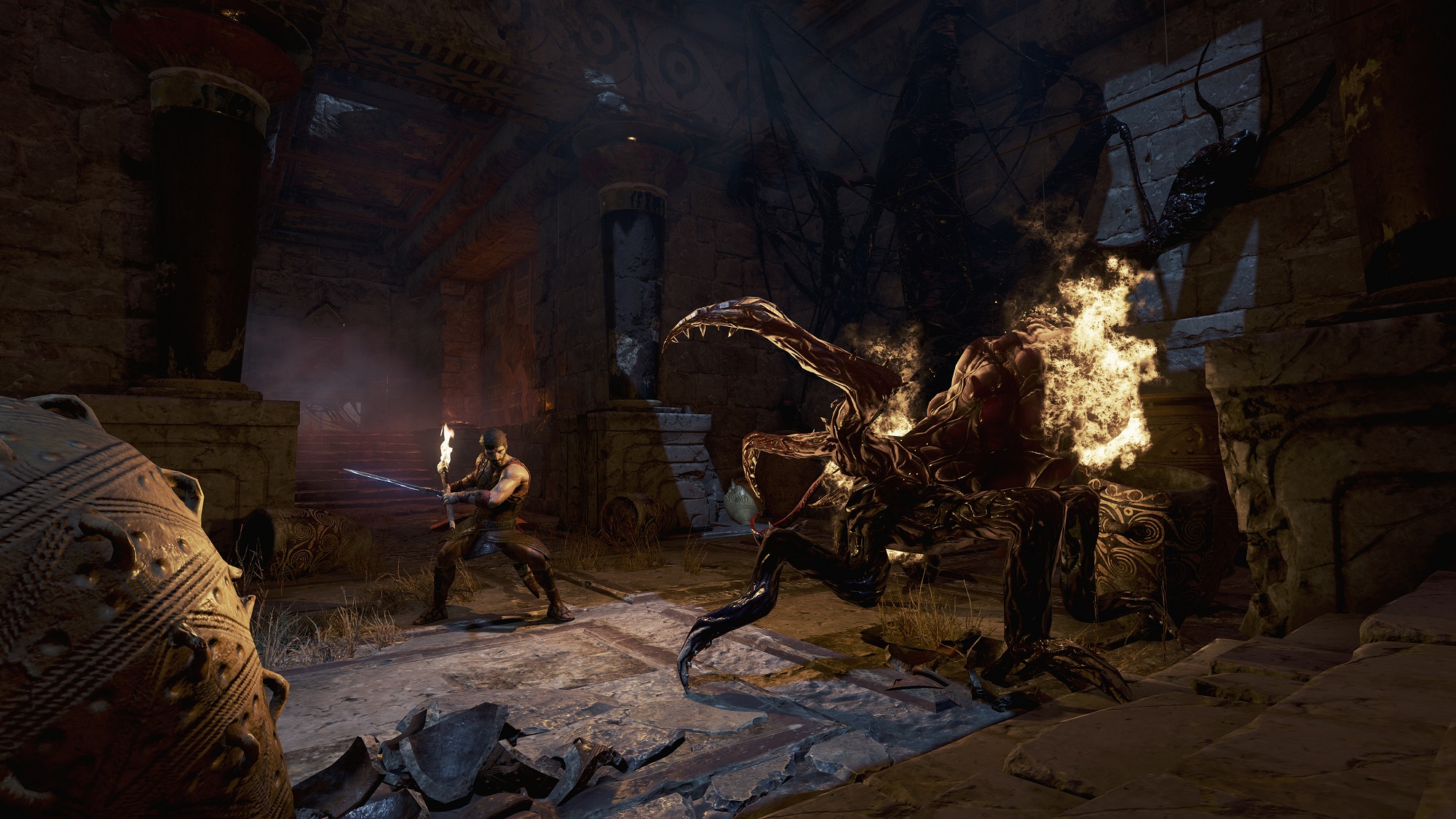Theseus, along with Perseus, Heracles, and several others, is often regarded as one of the greatest heroes in the entire lineage of Greek mythology. When you’re given your very own boss fight in the God of War series of video games, that alone is usually enough to mean you’re a pretty big deal.
One of the most well-known and repeated stories of Theseus you’ll find mention of though is his battle with the Minotaur. Typically he fights the beast after navigating a deadly labyrinth. In the appropriately titled new game from Forge Reply, Theseus, you’re tasked with being the star of this tale.
When I previewed Theseus a couple of months ago the build I tried was on the HTC Vive, but the first commercially available version of the game (which is being reviewed here) launched on the PSVR. Ever since the game was first revealed back in February it’s drawn frequent comparisons to God of War for obvious reasons. It’s a third-person action game presumably, utilizes direct references to Greek mythology, and has you doing battle with multiple, often large, monsters. But other than those surface level similarities the games couldn’t really be much different.
God of War is all about action. You get new weapons, unlock flashy combos, and are constantly fighting hordes of enemies. Theseus is about slow-paced, quiet, sometimes tedious, exploration with a scattering of occasional fights along the way. The majority of puzzles consist of climbing on ledges and hiding from the Minotaur itself. In some ways, it’s more of a stealth game than an action game.
The first weapon I found was a torch, which I could use to scare spider-like beasts away when walking around in the dark, but you do eventually get a sword as well. Unfortunately combat never really evolves beyond mashing buttons and trying to dodge enemy attacks. While you could say similar things about games such as Chronos, another third-person action adventure game in VR, that title is much, much longer, with more varied enemies and environments, as well as an actual progression system. Theseus sort of felt like the first act of a larger game that was intended to open up more eventually and never does.
I spent somewhere between three and four hours playing Theseus before it was over. During that time I often found myself stopping to stare at the nice looking backdrop designs in the distance and can confirm that chills very often shot down my spine when the Minotaur was nearby. Speaking of which, the Minotaur itself may be the best part of the whole game. He’s massive and extremely intimidating. The sense of scale is powerful and I honestly felt scared when I sensed his presence.
The sound design was excellent throughout and did a great job of making me feel like I was actually tip-toeing through a creepy labyrinth with a twisted, evil, and relentless Minotaur trying to hunt me down.
The atmosphere and world building is so strong it feels like a missed opportunity that the actual game itself isn’t better. Walking around environments that all pretty much look the same as a female wisp spirit guides me along was novel at first, but loses its luster quickly.
Just like Chronos, the entire game is played from third-person with mostly fixed camera angles. This means that each time you turn a corner or enter a new room the camera jumps to a new spot somewhere on the wall. It feels like you’re spying on your character and telling him where to go more than it does you’re actually controlling your character. It’s a style of gameplay I’ve never been a fan of with VR titles and vastly prefer an always-following camera in third-person such as in Lucky’s Tale or Edge of Nowhere.
One major reason is because Theseus doesn’t feel like a VR game. Wherein the other mentioned titles feel like they were designed from the ground up with VR mind for the most part, Theseus does not. Several segments have me walking in a straight line, with the camera deciding to suddenly hover behind me, but my character’s body is blocking my view while things are happening in front of him. It’s a bizarre feeling where I cannot see what my character sees even though he is facing straight ahead and it happened frequently.
Many of the textures and areas of the labyrinth appeared as noticeably blurry and jagged to me. Granted, the PSVR isn’t as powerful as the Vive or Rift, but I noticed similar issues on my Vive preview build as well. The art direction is wonderful and looks great in high-resolution screenshots, but those visuals lose their edge and luster when filtered through a VR headset. It’s just another way the game feels under cooked.
Theseus is a game that had a lot of promise. The dark and creepy setting comes through with a strong, foreboding atmosphere that’s often difficult to capture in VR games. But unfortunately the actual gameplay itself feels like more of a chore than anything else. It’s over far too soon and doesn’t feel properly designed for VR from the ground up. The Minotaur is terrifying and intimidating, but getting through everything else just to face him isn’t going to be worth it for most people.
This review is based on the PSVR version of the game and was originally published on Jul 26, 2017 but the game is now available on both Rift and Vive as well. Read our Game Review Guidelines for more information on how we arrived at this score.



























